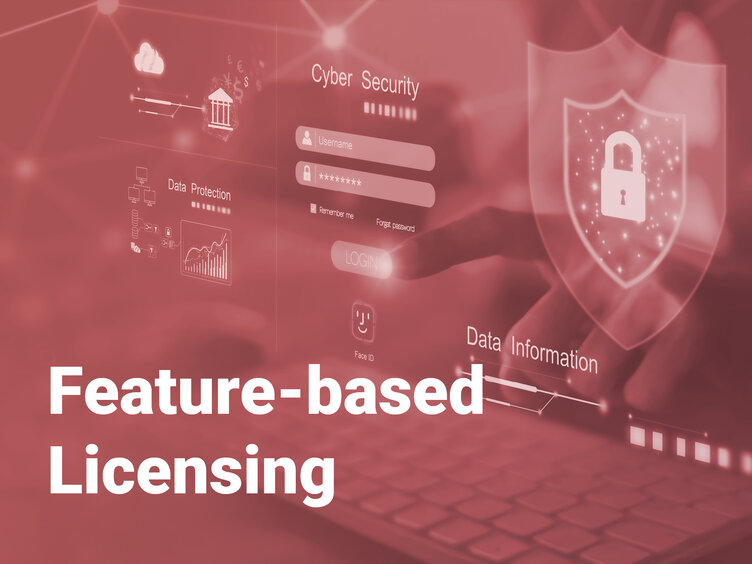Feature-based Licensing: flexible and new sales opportunities
Feature-based licensing refers to a licensing model in which software manufacturers granularly control access to individual functions or modules of their application. Customers do not receive a universal license, but can activate, deactivate or temporarily use specific features as required - often combined with other license types such as subscriptions or pay-per-use.
Importance in software protection
Objective: Maximum flexibility with simultaneous protection against unauthorized use. By isolating features, it is possible to:
- Contain piracy: Unauthorized use of individual functions is technically blocked
- Optimize monetization: High-quality features can be marketed as an upsell option
- Ensure compliance: License violations are detected at feature level
Core elements
Technical components:
- Feature IDs: Unique identifiers for each software feature
- Licensing API: Code integration for checking access rights
- Entitlement management systems: Centralized platforms for managing feature assignments
Process steps:
1. Modularization of the software architecture
2. Definition of feature packages
3. Integration of license check routines
4. Dynamic activation via cloud or on-premise tools
Influencing factors
Factor | Impact |
Software architecture | Microservices-based systems enable simpler feature isolation |
Customer needs | B2B customers expect customized feature combinations |
Pricing strategy | High-priced features require technical usage controls |
Legal requirements | Export restrictions for certain algorithms enforce feature locks |
Advantages
For companies:
- Revenue increase: Through add-on sales (Microsoft recorded 23% higher ARPU with feature licenses in 2024)
- Customer retention: Gradual upgrades instead of complete replacement
- Cost efficiency: Single binaries for all customers
For users:
- Transparent costs: Only pay for the features you need
- Scalability: Can be expanded in a targeted manner in the event of growth
- Security: Unused functions are not vulnerable to attack
Practical example: Microsoft 365 feature tiers
Microsoft uses feature-based licenses to unlock Teams premium functions such as AI transcriptions only in higher tariffs. Customers of the "E5" variant automatically receive access to compliance tools that are deactivated in basic versions.
Future viability (2025+)
- AI-controlled feature activation: Adaptive systems automatically adjust feature access to user behavior
- Edge computing integration: Local feature activation without cloud connection
- Blockchain-based proofs: Forgery-proof proof of feature licenses via smart contracts
Conclusion
Feature-based licensing has established itself as a key technology in modern license management systems. It enables software manufacturers to strike a balance between monetization and customer centricity, while at the same time strengthening protection mechanisms against abuse. With the integration of AI and decentralized technologies, the model will become even more relevant in 2025 - especially for providers of enterprise software and SaaS solutions.
Author:
Steffen Kätsch
Senior Support Engineer / Consultant License Management
Education: FH Jena
Expertise: License Management Software Licensing Software Protection IT Compliance Digital Rights Management
